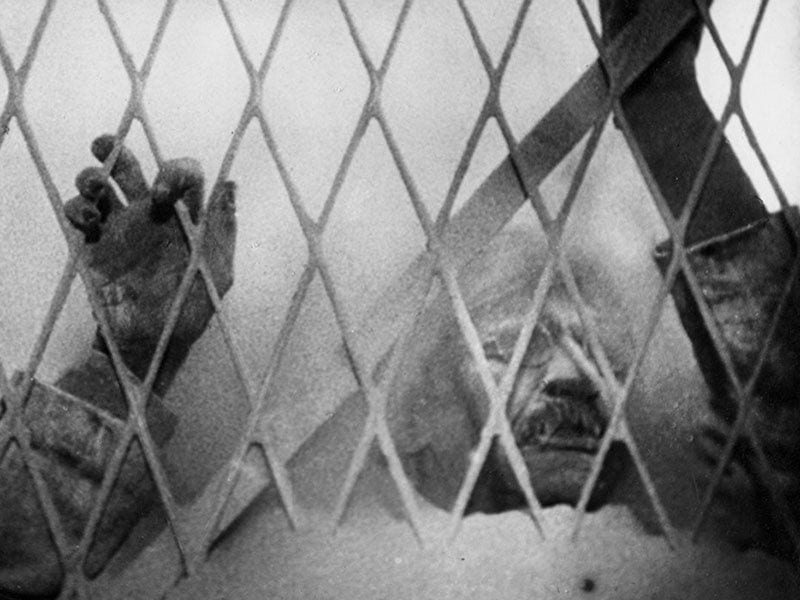
If Carl Theodor Dreyer had his way, his 1932 film Vampyr would now be a Halloween viewing tradition, like Tod Browning’s Dracula, released a year earlier. The Danish filmmaker hoped to capitalize on renewed interest in horror themes by making his first talkie a vampire story. Despite Dreyer’s optimism, the film flopped and remains obscure. The Criterion Collection’s new Blu-ray release probably won’t add Vampyr to the October cable rotation, but it will help you appreciate this strange film and the alternate vampire tradition it represents.
The plot is simple. Occult enthusiast Allan Gray (Nicolas de Gunzburg, as Julian West) takes what turns out to be a busman’s holiday: a fishing trip to a small town, interrupted by a mysterious murder. The lord of the local chateau is killed after confiding to Gray his fears for his life. He leaves behind two daughters, one of whom is suffering from a wasting disease and bequeaths a book about vampires to Gray.
Armed with this handy guide, Gray and the stricken family’s servants solve the crime: Léone (Sybille Schmitz), the ill sister, is in thrall to local dowager vampire Marguerite Chopin (Henriette Gérard) and the family doctor (Jan Hieronimko) is in league with the vampiress. She and the doctor meet fitting ends; Léone regains her soul at the cost of her life, and Gray goes off with surviving sister Gisèle.
Despite spare dialog and reliance on Wolfgang Zeller’s score to convey an emotion that recalls the silent era, the film is surprisingly modern. Dreyer filmed in scouted locations, not a soundstage, hired amateur actors who brought vitality to the project, and used inventive effects, lighting, and camera angles not generally present in films from the early sound era.
At one point, rendering Gray’s panic, the camera rotates 360 degrees. Gray wanders through a dilapidated factory occupied by shadow people: a soldier, musicians, dancers—all uncannily filmed through scrims or at selected angles so we see only their shadows. In the film’s most arresting sequence, Gray has an out-of-body experience in which his shadow (a slightly transparent version of himself) experiences his death, confinement to a coffin, and transport through the streets. Gray’s perspective is rendered in point-of-view shots through the coffin’s window over his face.
The production of this languorous, dreamy film was evidently anything but. Seeing the director’s slow, deliberate intensity in a filmed interview from a 1966 documentary included on the Blu-ray, you are not surprised that de Gunzburg remarked on the director’s habit of multiple takes and his frequent impatience with cast and crew. Or that in an interview from Film Culture‘s spring 1964 issue de Gunzburg is asked if he ever felt “imprisoned” at any point during filming. (“Not me”, is his reply.)
Vampyr draws inspiration from Sheridan Le Fanu’s horror tales, in particular his novella Carmilla (1872), about a teenage female vampire who preys upon other young women. As Mark Le Fanu (a descendant of the fiction writer) points out in an essay among the extras, Dreyer omits the sexual nature of the girls’ relationship (the young women in the novella are friends, not sisters). Le Fanu the younger makes a case that Vampyr catalogs Dreyer’s own unhappy childhood, with Chopin standing in for his “hated Danish foster-mother”. Intriguing. But you don’t have to subscribe to that interpretation to feel the threat posed to the domestic order by the kind of vampirism presented in the film.
According to Gray’s inherited primer, one vampire can infect an entire village by turning family members against each other. The most horrific scene in Vampyr comes when Léone leeringly menaces her sister but stops short of biting her. Kim Newman, in his essay included with the release, discusses the long tradition of female vampires in literature and film; you can also make a case that Dreyer’s epidemiological approach relates Vampyr to zombie films, where the upending of societal and familial conventions and bonds is a fundamental theme. Léone’s unsisterly behavior, for example, looks forward to the striking and controversial scene from Night of the Living Dead in which a zombie girl kills her mother.
Besides the enhanced video, the new release offers a booklet containing the screenplay by Dreyer and Christen Jul and the full text of Carmilla. The extras that accompanied the 2008 Criterion DVD release are also included. A smaller booklet contains production details and three essays plus the interview with de Gunzburg. Le Fanu explicates the film in the context of Dreyer’s work and discusses its reception. Newman reviews Vampyr in the context of horror film and the vampire subgenre. Martin Koerber details the film’s restoration. The disc, in addition to the film and documentary, features audio commentary by film scholar Tony Rayns, a video essay on Dreyer’s influences by scholar Casper Tybjerg, and a 1958 radio program with Dreyer.


